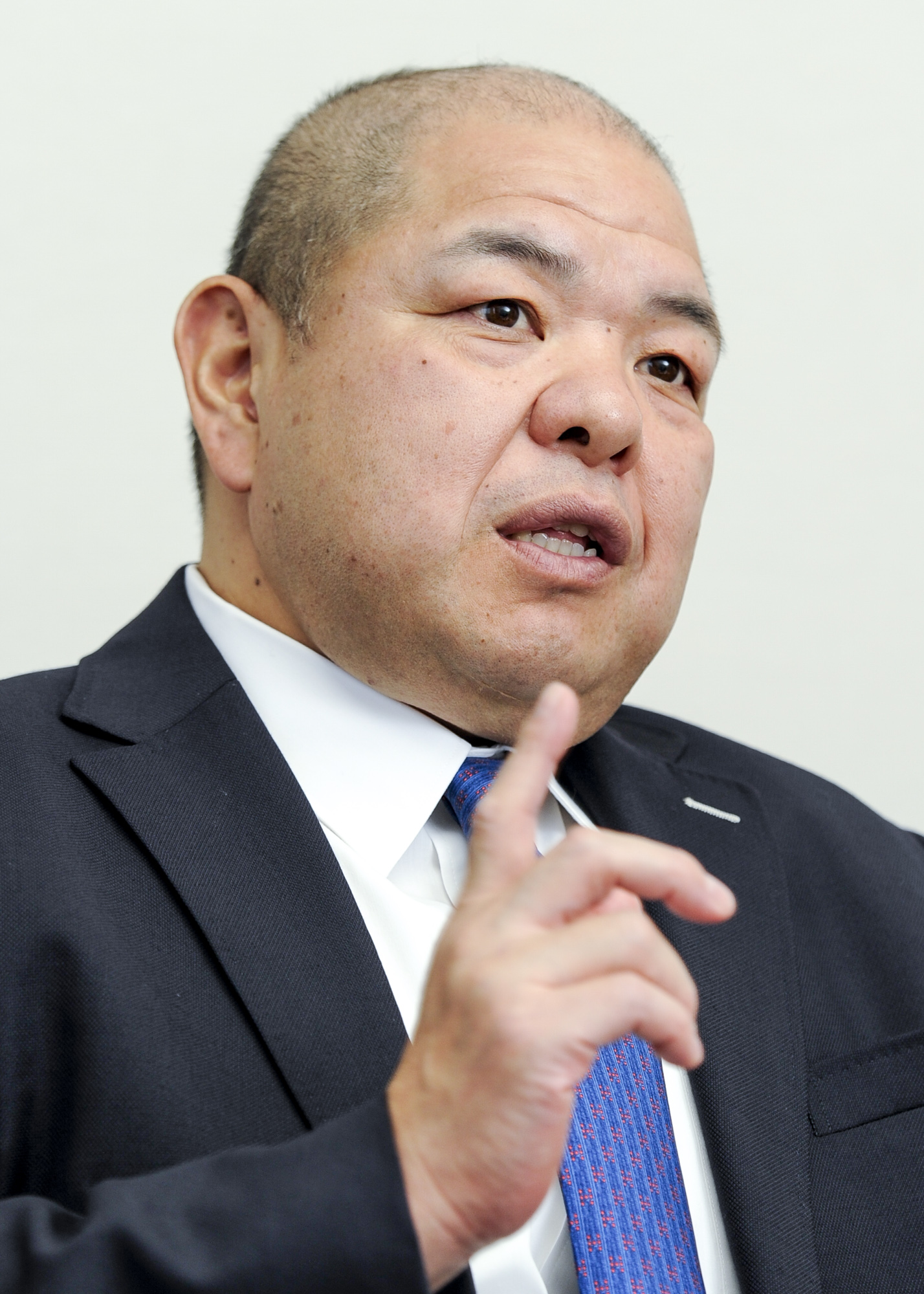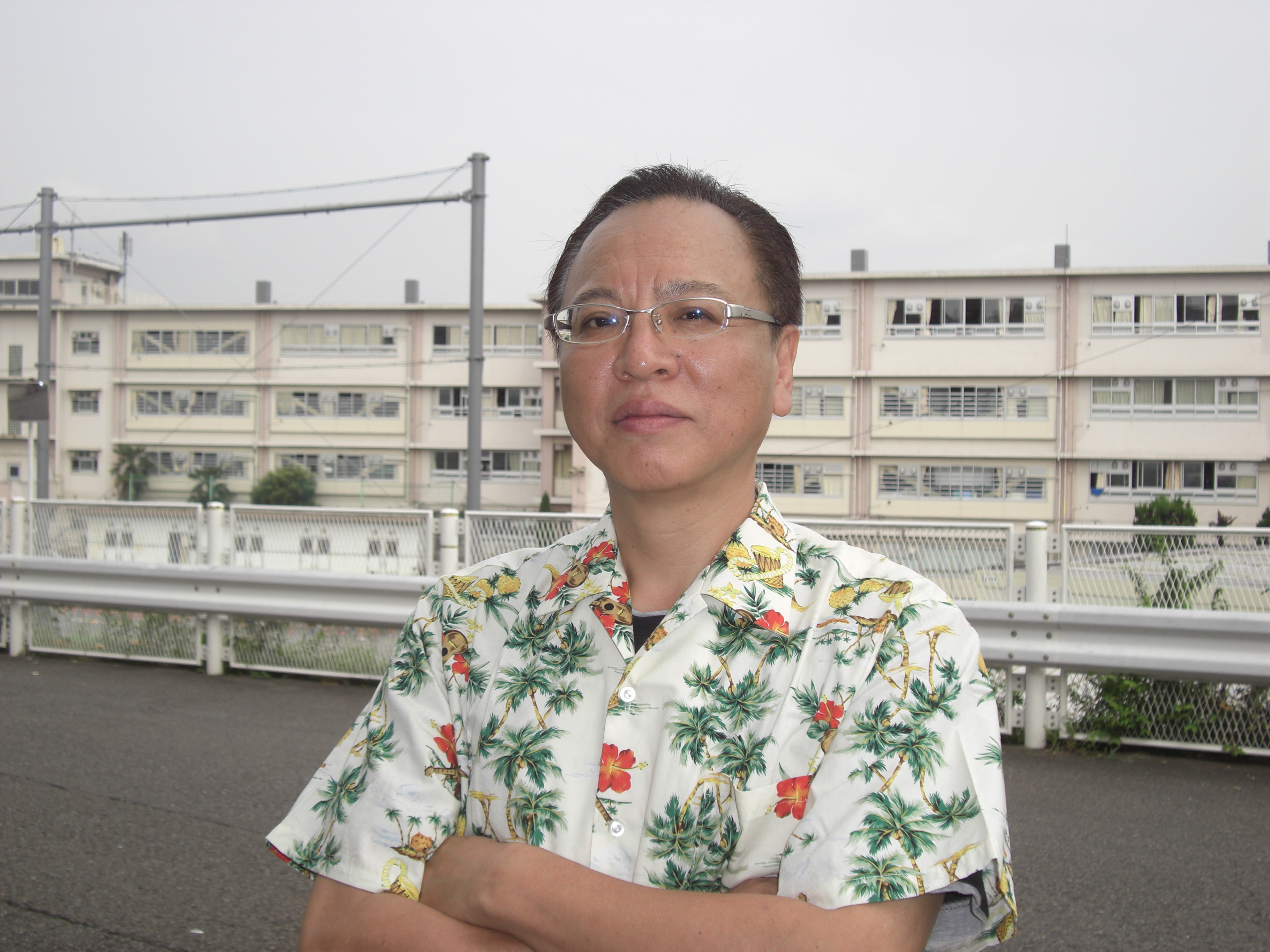Inhabitants of Darkness, Born Out of Human Anxiety From Edo-Tokyo Museum’s Grand Yōkai Exhibition “From Eery to Endearing: Yōkai in the Arts of Japan”
In Japanese folklore, yokai are specters, ghosts, monsters or apparitions that take on bizarre forms and startle people in their daily lives. The number of pictures and paintings depicting those forms increased dramatically during the Edo period (1603–1867), and yokai became a familiar theme. But paintings depicting the monsters that inhabit the spirit world have been produced since ancient times, and have continued to stimulate people’s imaginations for centuries.
“The Ruined Palace at Sōma,” oban nishiki-e sanmai tsuzuki (large-size multi-colored woodblock print, three prints forming a single composition), Utagawa Kuniyoshi (1844–48), now in a private collection. Exhibition period: 5 July – 28 August 2016 at the Edo-Tokyo Museum (Tokyo) and 10 September – 6 November 2016 at Abeno Harukas Art Museum (Osaka)
Yokai can be regarded as manifestations of human fear and anxiety in day-to-day life. Their depictions in Japanese painting began to appear on the scene from the Kamakura period onwards. Even before that, there had been depictions of the demons and monsters that inhabit the spirit world, but there are no older pictures using the motif of yokai that appear in people’s daily lives.
Although images of yokai had existed since the Kamakura period (1185–1333), until the Muromachi period (1336–1573) it was only the wealthy people of Kyoto that could enjoy them. It was only in the Edo period that they began to spread amongst the common people. It began with the active production of duplicates of the Muromachi-period masterpiece “Night Parade of a Hundred Demons.” From the mid-Edo period onwards, countless printed works — including books and ukiyo-e prints — on the theme of yokai began to be produced. The development of the gokaido, the five highways that linked the capital Edo with outlying regions of the country, served to spread these yokai images throughout the whole of Japan.
According to art historian Yasumura Toshinobu, it was a phenomenon that can be referred to as “the explosive proliferation of yokai.”
Famous artists such as Ito Jakuchu, who was active in Kyoto during the mid-Edo period, and ukiyo-e master Katsushika Hokusai also tried their hand at producing yokai works, and left behind masterpieces in the field.
“The field of yokai-ga (yokai pictures) — in which artists must depict monsters or apparitions that cannot be seen with the eye — is the most challenging area of art, where the artists’ skills are put to the greatest test. Artists would have needed to use all of their skills, and from time to time surely enjoyed painting them even more than figures or landscapes,” says Yasumura.
Yokai are symbolic of a peaceful age
Each of the yokai depicted in these images feels strangely familiar. Based on their distinctive characteristics, Yasumura say that they can be broadly categorized into transformed animals and plants, tools and other familiar everyday items that have come to life, and demons and other apparitions that have appeared from Hell or the spirit world. This fact surely indicates that feelings of awe towards nature and the importance of taking care of things were instilled in these images.
Important Cultural Property “Night Parade of a Hundred Demons” (partial), said to have been painted by Tosa Mitsunobu (Muromachi period, 16th century), now in the collection of Shinju-An Temple, Kyoto Exhibition period: 2-28 August 2016 at the Edo-Tokyo Museum (Tokyo)
“During the war-torn Momoyama period (1573–1615), hardly any yokai-ga were produced at all. So we can say that people being able to enjoy pictures of yokai is symbolic of there being peace and harmony in the world,” Yasumura explains.
Even in this modern age we face various concerns and anxieties, but as long as yokai-themed anime such as Yōkai Watch are still in fashion, it seems that the end of the world is still a long way away.
It is widely regarded that no other yokai-ga has had a greater impact on later generations than “Night Parade of a Hundred Demons,” which was produced during the Muromachi period. The comical yokai that appeared in this work went on to be reproduced countless times, and firmly established themselves as the quintessential yokai; although the true creator of the work and their intentions in producing it are unknown. Yasumura Toshinobu speculates as follows.
Important Cultural Property Horned Owl Dogū clay figurine (Jōmon period, c. 2,000–1,000BC), now in the collection of the Tatsuuma Archaeological Museum, Hyogo
Exhibition period: 5 July-28 August 2016 at the Edo-Tokyo Museum (Tokyo) and 10 September – 6 November 2016 at Abeno Harukas Art Museum (Osaka)
“Judging by the superb quality of the work, there is surely no question that it was produced by an artist who was close to the Imperial court. Maybe they sought to overcome their fears of the yokai that lurk in the darkness by depicting them in visible form. It may well have been a work born out of such sentiments harbored by the aristocrats of the time.”
On the other hand, Yasumura says that the influences of emaki scrolls depicting scenes of Hell produced during the late Heian period (794–1185) can be seen in yokai-ga produced between the Kamakura and Muromachi periods. The giant insects and monsters that appear in the National Treasure “Extermination of Evil” — a series of paintings depicting monstrous deities devouring daemons—appear repetitively later on in various tales of monsters, changing their names and features as time passes.
“Pictures using the Hell motif were painted at a time when Pure Land Buddhism — in which believers pray to go to the ‘Pure Land’ after death — was becoming popular in Japan. This was because interest in Hell, as the diametric opposite of the Pure Land, increased at that time. All of these artistic works are based on Buddhist thinking, and are not yokai-ga. But in the sense of turning fears into pictorial form, they do share some common ground with the yokai-ga of the later eras,” explains Yasumura.
Going back further still into prehistoric times, there are the dogu clay figurines; bizarrely shaped dolls of the Jomon period (c. 10,000 BCE – 300 BCE). One theory suggests that these dolls represent a physical modeling of a kind of “presence” that the people of the time felt in the natural world. If that is the case, maybe it can be said that that these clay figurines are the original yokai.
Japanese yokai may actually have a history dating back to around 4,000 years ago.
This exhibition will serve as the definitive word on yokai from an art-historical perspective; introducing yokai, which have been so beloved by the Japanese since ancient times, and explores their development as “manifestations of human anxiety surrounding the spirit world” through a range of first-class artworks. These include National Treasures and Important Cultural Properties, from Jomon-period clay figurines to Heian- and Kamakura-period pictures of Hell and medieval illustrated handscrolls, Edo-period ukiyo-e, and even the present-day Yokai Watch video game series.
Note: Grand Yōkai Exhibition http://yo-kai2016.com/english.html
Translated from “Tokyo-to Edo-Tokyo Hakubutsukan ‘Dai Yokai Ten: Dogu kara Yokai Wacchi made’ yori-Hitobito no Fuan ga Unda Yami no Junin (From Edo-Tokyo Museum’s Grand Yōkai Exhibition “From Eery to Endearing: Yōkai in the Arts of Japan”-Inhabitants of Darkness, Born Out of Human Anxiety),” SERAI, August 2016, pp.91-95. (Courtesy of Serai, Shogakukan Inc.) [August 2016]



